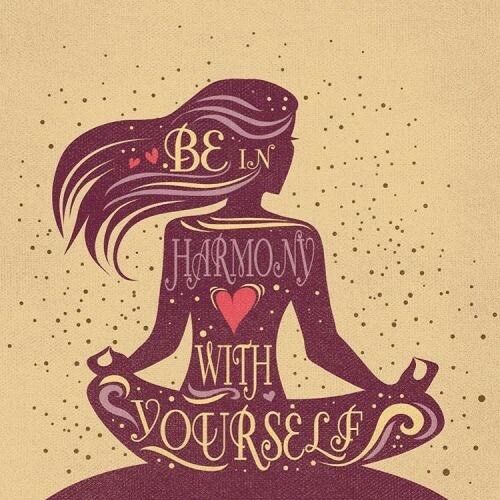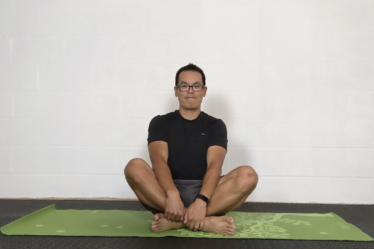
In yoga teacher training, one of our very first homework assignments was to find 5 minutes per day to just sit in silence and afterwards write a brief journal entry about whatever you experienced in those 5 minutes. As we progressed through the training, we were encouraged to slowly increase the amount of time. Let me tell you, I am a rule follower, so I of course was diligent about this for the 4 months of training and it 100% taught me a lot — mostly about how my mind NEVER stops. I would set a timer, maybe sit in the hammock outside and enjoy the sounds of nature, or use an ocean sound playlist to really help me block out my surroundings (pratyahara-withdrawal from the senses). Sometimes I would try to count the length of my inhales and exhales, or simply focus on making them longer and more even (dharana-focused concentration). And then my mind would wander and I would lose track of what I was counting, lose track of the focused breathing. Over and over and over again. Maybe a million times in those 5 minutes (dhyana-meditation).
Wait, what was that? Getting interrupted a million times by my own thoughts is meditation. Yes! Okay….but I also thought we were supposed to be talking about yoga OFF the mat. We’re getting to that, but I need to explain a little more about the concepts that I alluded to in my teacher training experience anecdote — including the meditation part.
The final three limbs of yoga (Dhyana, Dharana, and Samadhi) are probably best to combine into one post. I think one sort of leads right into the next, and unlike the last 5, it is a bit more linear. If you remember back to the first post in this series, the 8 limbs are NOT a step by step guide to the practice of yoga. You don’t have to complete / perfect each one in a certain order to move on to the next limb. Asana *could* be practiced entirely on its own. One could simply sit down to meditate and focus on the last 4 limbs. Truly, you could practice all 8 limbs simultaneously, ALL the time, but we’ll get to that next week!
Last week we covered Pratyahara (withdrawal from the senses) and noted it was a bridge between the external and the internal practices. Dharana (focused concentration) and Dhyana (meditation) follow this sensory withdrawal and that makes sense. If we are moving inward, attempting to focus and concentrate on the inner workings of our minds (busy and chaotic places!) it stands to reason that we would need to block out the rest of the world in order to tune in.
Dharana (focused concentration):
When practiced on the mat in an asana class, this can perhaps be experienced when really concentrating on a challenging pose. I find that difficult balancing postures and deep backbends require me to block out the sounds around me (pratyahara) and REALLY focus on what is going on in my body. I fix my gaze (drishti) to help with balance. Where the eyes go, the mind follows, so having a place to focus my visual attention allows my mind to be more steady. I may repeat cues in my head to remind myself of which muscles to engage, where to send the breath, to slow the breath, etc.
This is not unlike what someone may do who is preparing for meditation (dhyana). Rather than focusing on the physical body, one may repeat a mantra over and over, or perhaps count their breath. Candle staring is another common practice that gives the practitioner a single pointed focus. Using a guided meditation, and focusing on the voice and the words of the teacher is another example.
Dhyana (meditation):
Once you have blocked out external stimuli and begun to focus or concentrate on a single point, meditation seamlessly follows. Meditation, for those of you who have little (or even no) experience, isn’t perhaps what you think it is. It doesn’t have to involve sitting in a lotus position with your hands resting on your knees, eyes closed and completely oblivious to the world around you. There are moving meditations, and walking meditations. And truly, I think ANY activity, if you are truly focused and present, can be done in a way that is meditative. When your thoughts and worries dissipate and you are truly enjoying or “lost” in the task or activity. It could literally be gardening, washing dishes, or even folding laundry if it is being done mindfully. For some of you, this may be best experienced when playing a sport or engaging your body in a way that requires focus and concentration. Maybe there is another activity that you engage in where you are completely absorbed in what you are doing and you lose all track of time (lunch with a friend, a good book, etc). The meditative part comes when you are so engrossed and present in what you are doing that other thoughts subside. There’s that OFF the mat part!
Samadhi (bliss, unity, inner peace) — I don’t feel overly qualified to explain or discuss the 8th limb. I have a vague understanding of what it is *supposed* to be, but in truth I don’t think I’ve experienced it yet, and perhaps never will. If I’m lucky perhaps I will have a few moments here and there in my lifetime where I am able to be my true self, and fully present in order to experience such bliss, such freedom.
Alright, so we’ve got the concepts down, now let’s circle back to that homework assignment from yoga teacher training. I don’t think they ever even came out and said that the “5 minute sit” exercise was meditation, but it was. Sitting with your own mind and letting the thoughts flitter around while simultaneously trying not to judge yourself for not being able to quiet your mind is absolutely meditation. And it’s hard. And it’s frustrating. And you feel like you aren’t doing it right. But you ARE! Meditation is really just allowing yourself to BE in tune with your own thoughts. To really listen to them, and not let them be just interruptions of OTHER thoughts.
Meditation is being able to notice what comes up and simply allowing it to be there. Not judging, maybe even accepting what shows up. After a while, maybe you begin to notice patterns. Do your thoughts always jump to the future (maybe a sign that you are an anxious person)? Do you ruminate over past choices and mistakes (maybe a sign that you have a tendency toward depression)? Whatever the patterns are, eventually, you start to see them coming. You anticipate them and you can stop them before they take over your conscious thoughts. Meaning, you begin to take a little bit of control over what’s going on in your monkey mind and maybe even start to change the wiring. You create NEW pathways that are healthier and lead to a happier, more peaceful existence with yourself. Definitely a practice of yoga OFF the mat.


